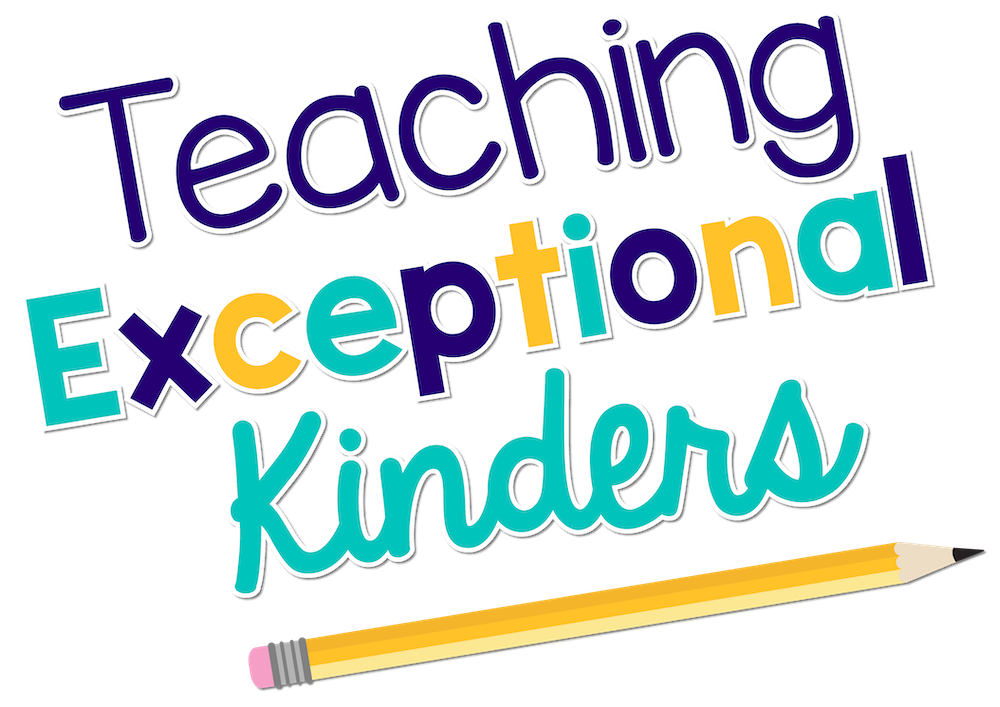Why You Need a Calming Space in Your Classroom
Whether you have a quiet group of students or limited classroom real estate, you might feel like a calming area is something you can skip. On the other hand, you might be struggling with a challenging class and feel like a calming area would be just one more thing on your plate. No matter what situation you are in, it can be very helpful to have a calming space in your classroom. Keep reading to see why you should be using this helpful tool!
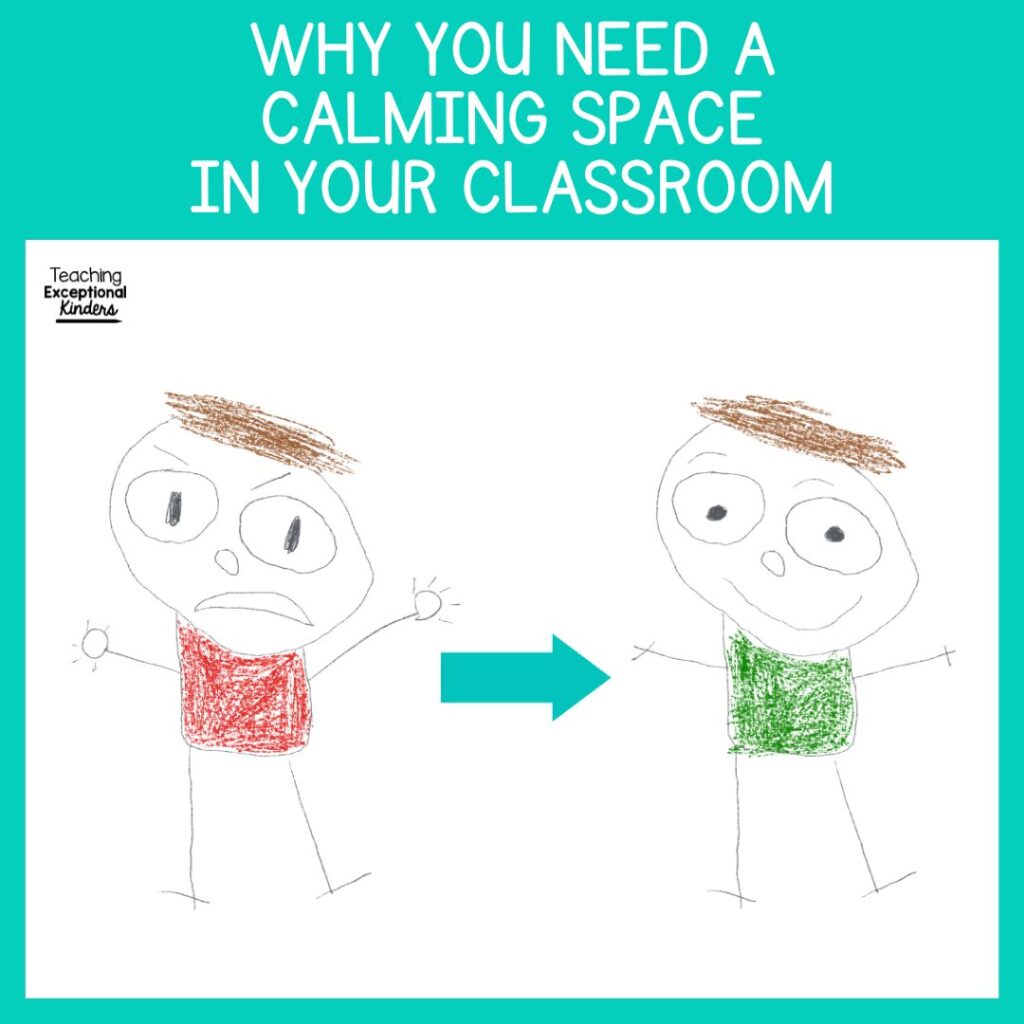
5 Reasons to Use a Calming Space in Your Classroom
We continue to see more and more behaviors of all kinds in kindergarten. Managing behavior is easily one of the most difficult parts of teaching. Many teachers have found that incorporating a calming space in the classroom is a helpful way to address behavior throughout the daily routine. However, you might feel like introducing a calming space to your classroom is just another thing you need to monitor.
If you’re on the fence about having a calming area in your classroom, here are five reasons why you should consider it:
1. Calming Spaces Help Students Feel Safe
We need to remember that first and foremost kids need to feel safe in the classroom. Whether students are feeling sad, angry, or worried, big feelings can be unsettling for young students! It can be also be scary for them to watch their classmates experiencing big emotions.
A calming space gives students a safe place to regroup when needed. It can also provide students with a way to escape an unsettling situation and process their own emotions.
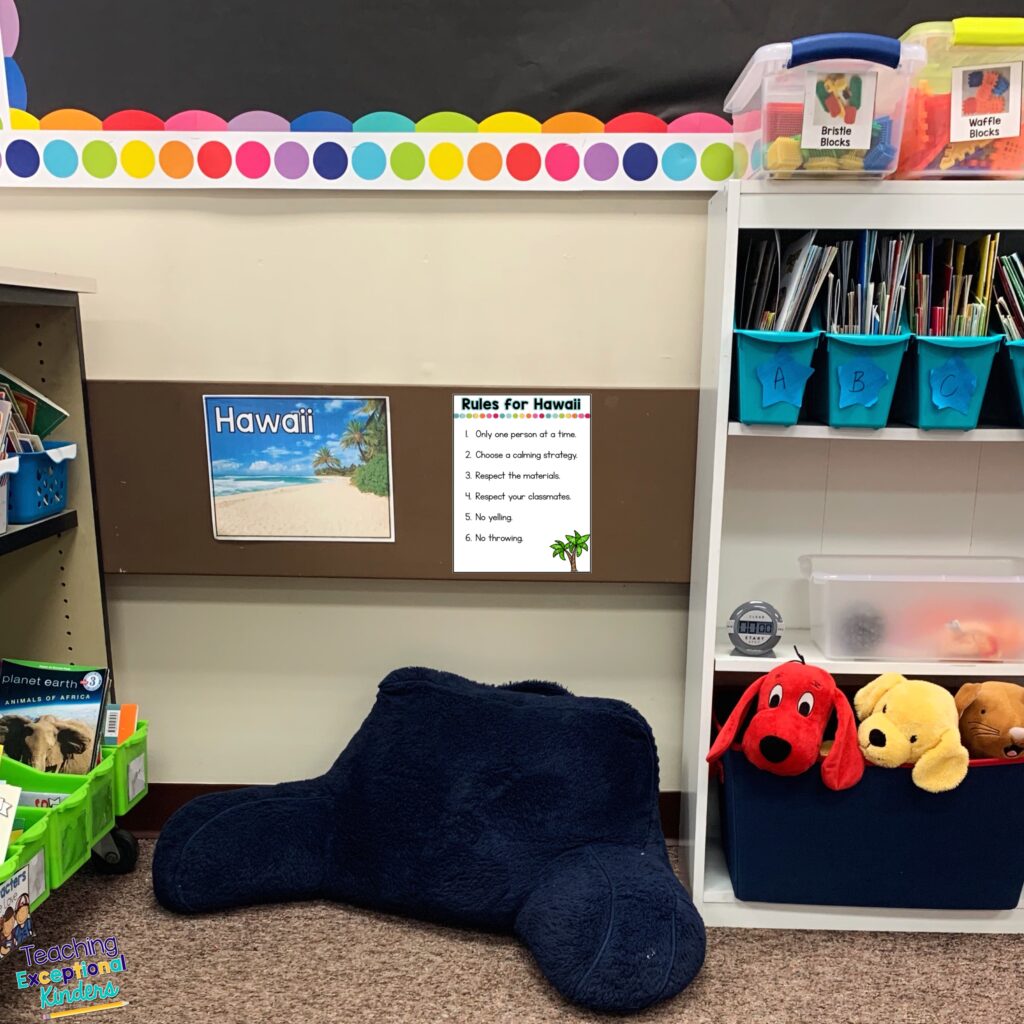
2. Calming Spaces Support All Learners
Don't skip on a calming space just because you don't have a student who exhibits big, disruptive behaviors. You could have a few students struggling with anxiety in your classroom and you may not even notice! These students would benefit from a break just as much as the students who are lashing out in anger. Not all kids act out when they need a break!
This is why it can be so helpful to rename your calming space. The phrase “calm down corner” is popular, but it’s not very effective. First, it can be triggering for escalated students to be encouraged to “calm down.” Plus, it can imply that the space is meant only for students who are having disruptive outbursts or are bouncing off the walls. Try giving your calming space a name that is inviting for all students. (I always used “Hawaii” in my classroom.)
3. Calming Spaces Give Students More Control
We all could use a break from time to time. When we’re tired of sitting at our computers, we might stand up to stretch our legs. If we aren’t quite ready to dive into a work task, we might chat with a coworker for a few minutes instead. Our students don’t have the autonomy to just take a walk or put their heads down for a few minutes whenever they need to clear their heads.
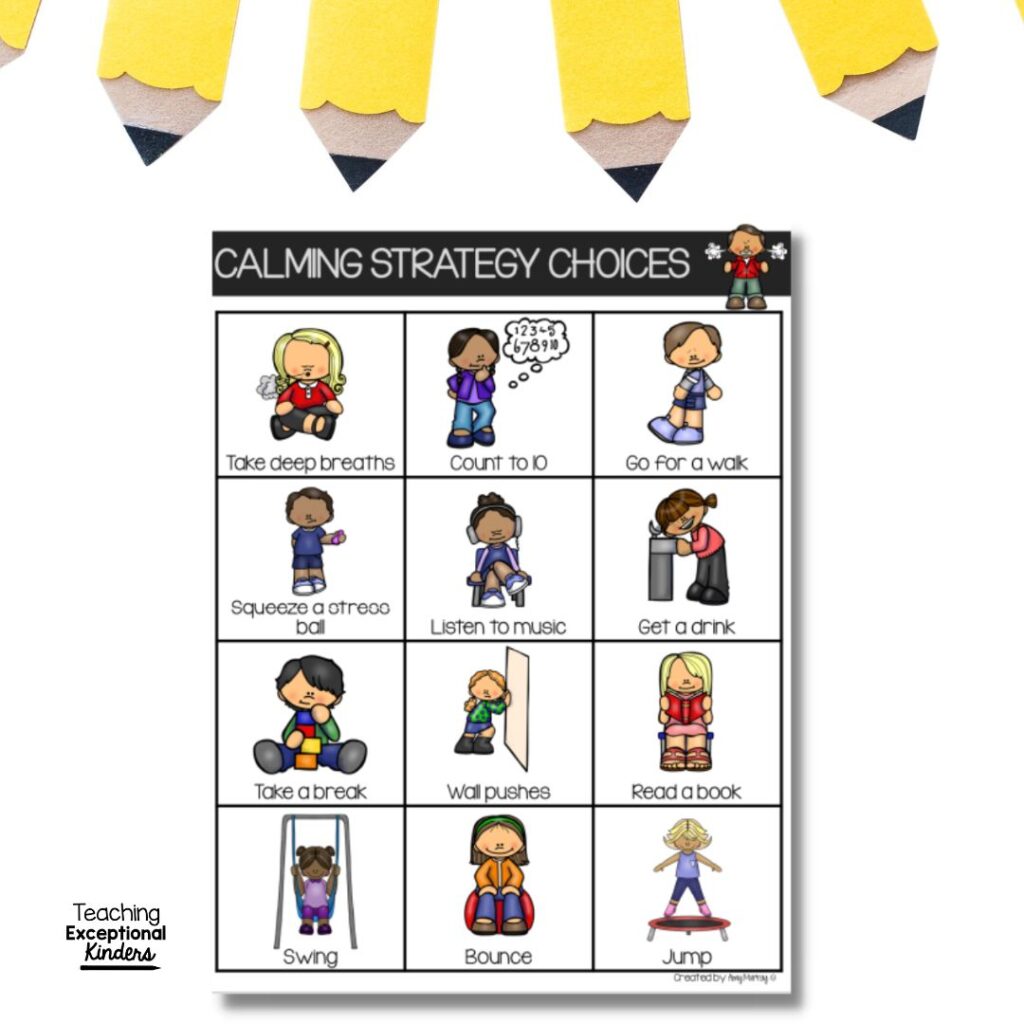
Over time, a lack of control can become a cause of defiant behavior for some students. A calming space can provide students with a more appropriate sense of control. They can choose when they need a few minutes to themselves. They are also able to choose from a variety of tools to help them regulate their emotions. This can go a long way in helping students feel more in control of their emotions and learning environment.
4. Calming Spaces Create Boundaries
When students are given an open-ended invitation or direction to “take a break”, that can mean very different things to each student. Some kids won’t know what they’re expected to do during a break or why they need one. Others may take advantage of the situation and use the break as playtime.
A calming space can create boundaries that help students better understand how they can use a break to collect themselves. You can use calming strategy visuals to help students make the most use of their time in the calming area. This provides them with suggestions for appropriate activities that will help them reset. You can also have a sand timer in the calming space to create a boundary regarding the length of the break.
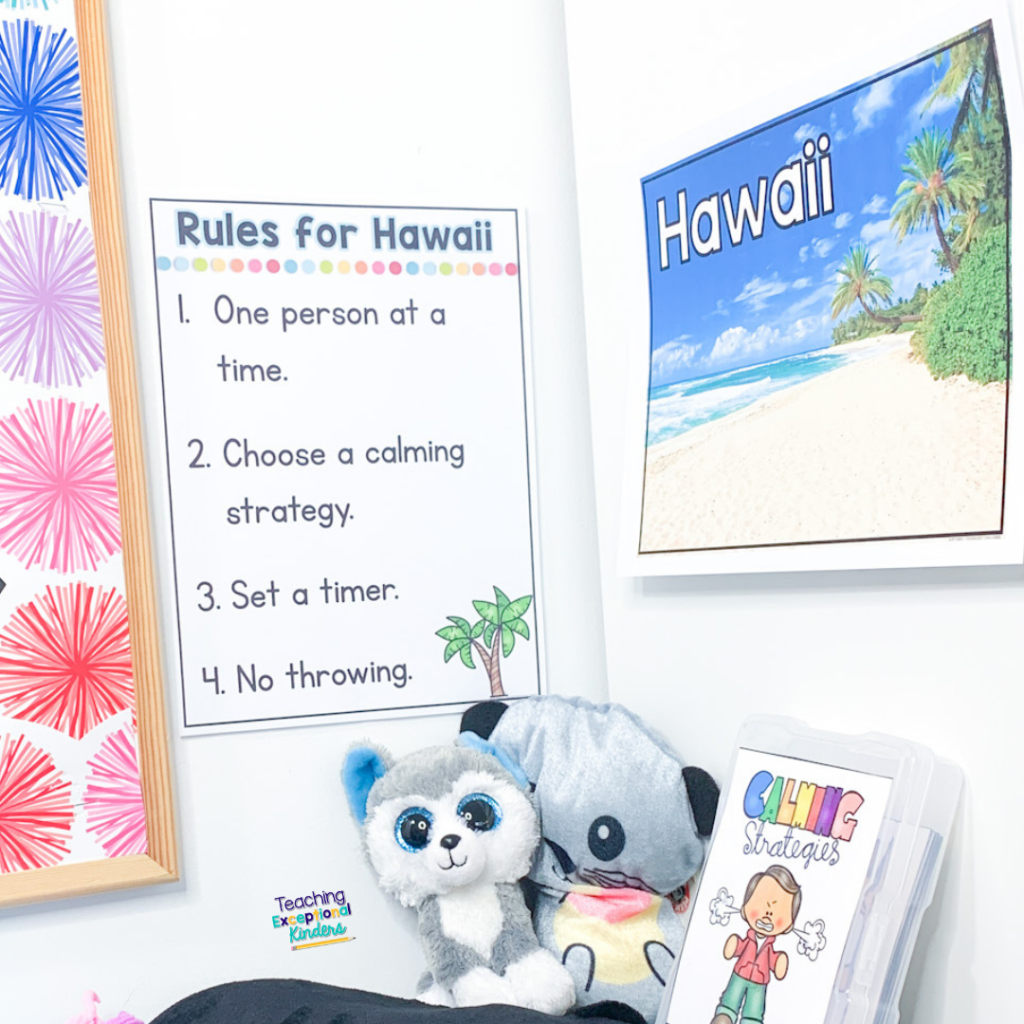
5. Calming Spaces Can Be Preventative
Many people think that calming areas are intended to address disruptive student behaviors that are already in progress. However, one of the most useful parts of a calming space is that it gives students a chance to self-regulate before their behavior impedes their learning or the learning of others.
When you treat the classroom calming space as the preventative classroom management tool it is, you’ll find that your students are much more likely to use it. They won’t treat it like a space where kids go when they’re having an explosive tantrum. Your quiet, anxious students will begin to see the space as a place for them to regulate their emotions, as well.
How to Set Up a Classroom Calming Space
Now that you’ve seen how helpful a classroom calming area can be, you might have questions about the actual set-up. Check out this video, where I walk you through all of the elements of an effective calm down space.
Printable Calming Space Tools and Visuals
Would you like to set up a calming space in your classroom? I have put together a bundle of printable resources that will help you create an effective calming area for your students. This low-prep resource includes calming strategy visuals, a helpful social story, behavior reflection sheets, and other helpful visuals for setting up your calming space.
Head over to the Teaching Exceptional Kinders shop or to my TPT store to take a closer look at everything included in this bundle.
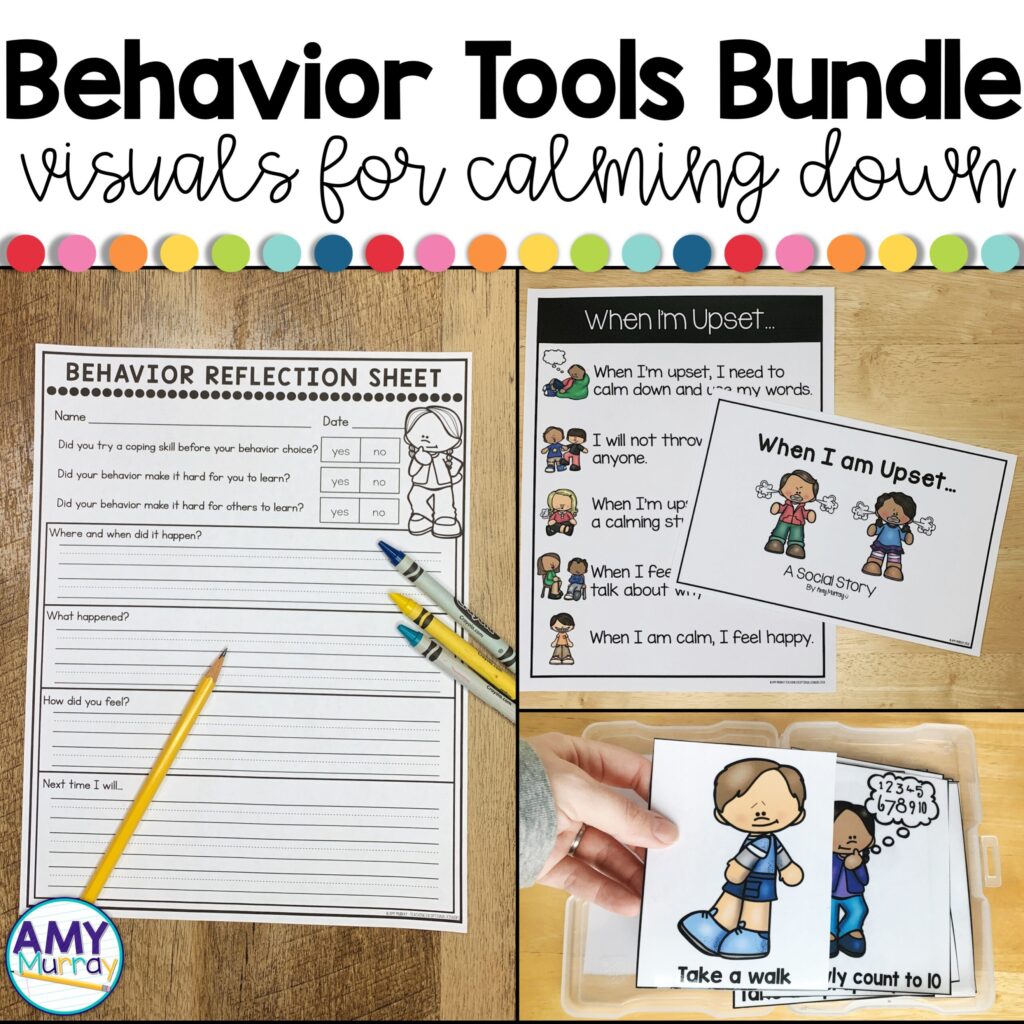
Save These Tips for Classroom Calming Spaces
Be sure to save this post if you’d like to come back to it later. You’ll be able to quickly find these tips and resources when you’re ready to set up a calming space in your classroom.
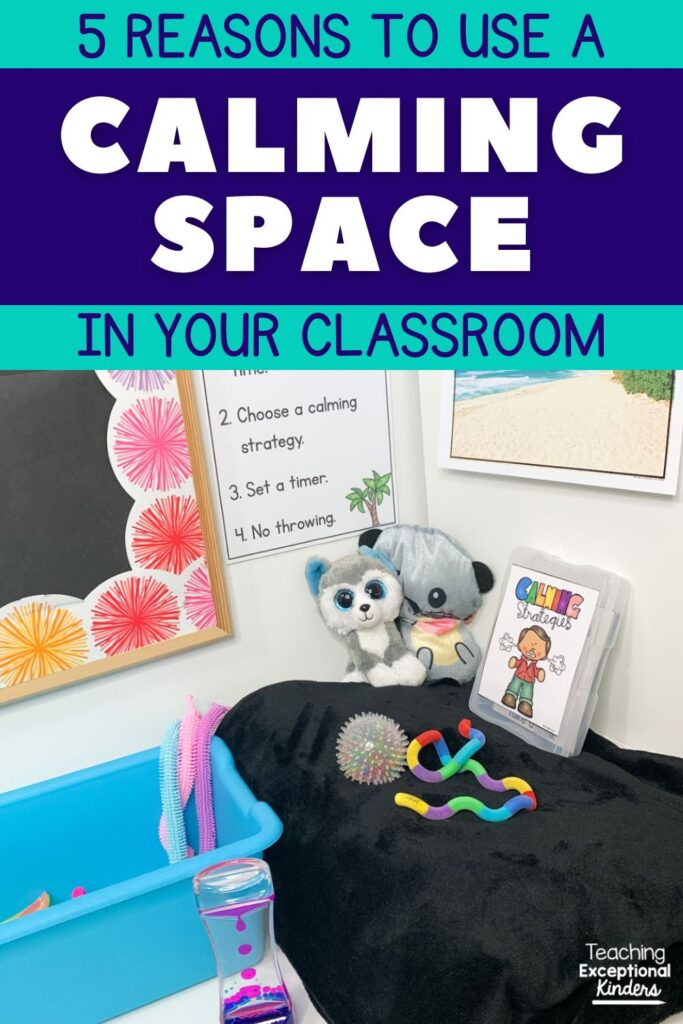
Amy
SITE DESIGN BY LAINE SUTHERLAND DESIGNS

